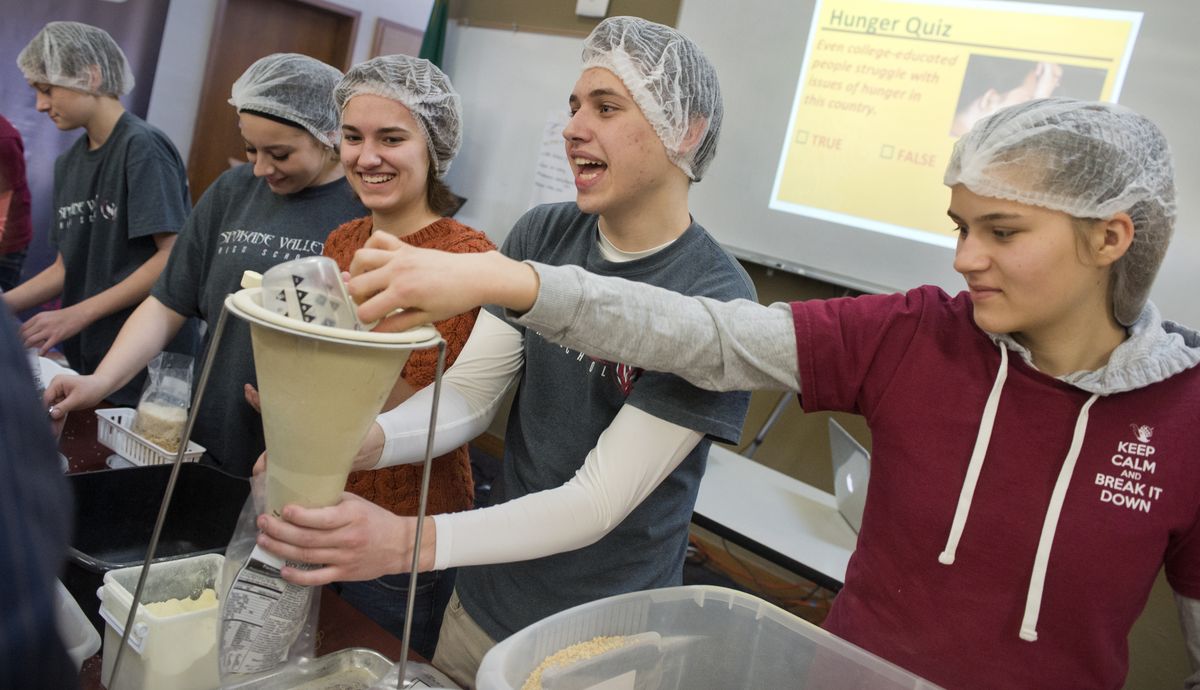Spokane Valley High students buy ingredients; prepare meals for poor

At Spokane Valley High School, a nontraditional high school in the West Valley School District, students are looking outside of themselves to find ways to help the community.
“I’m really proud of what we were able to do,” said Tigan Knauss, language arts and social studies teacher at the school. “Our big goal here is ‘how do we impact our community?’ ”
In fact, a sign in the multipurpose room asks students, “What is my personal impact as a citizen?”
Biomed teacher Eric Jurisan said each day students are given a phrase to think about. On Thursday, it was, “Talk doesn’t cook the rice,” meaning actions speak louder than words.
Before Thanksgiving, students kicked off a campaign to learn about world problems. They decided to see what they could do to tackle hunger locally. They joined with Generation Alive. The local nonprofit, founded by San Francisco Giants pitcher Jeremy Affeldt, collaborates with other nonprofits to “engage students in compassion-based issues,” said Molly Hough of Generation Alive.
Through Generation Alive’s Something to Eat program, students learned about the need and raised money to buy food for about 25 cents per meal.
The students raised funds through different avenues. One class sold cotton candy. Another had a bake sale. Individual students like Traven Brown, a junior, and his friends held a competition to see who would get the most donations. The winner would promise to wear a dress for a day. Melody Fyre, a sophomore, sold hearts that were painted and put into frames through Pacific Flyway Gallery and Framing for $20; she raised $200.
In all, the school raised $1,600. With some matching funds from Generation Alive, students were able to bag up 10,456 meals.
Thursday morning, students gathered at work stations at the school. There were tubs filled with soy, rice, dehydrated vegetables and chicken-flavored vitamin powder. After passing around anti-bacterial gel and hair nets, the students got to work.
They scooped a cup of soy, a cup of rice, a scoop of vegetables and a dab of powder into plastic bags, which were then weighed and sealed. Each bag holds six servings. The only thing someone needs to prepare it is boiling water.
The meals will go to Second Harvest. Within a half an hour, students had bagged 2,300 meals.
“A lot of times, kids our age don’t think about that stuff,” said Lacey Smith, a freshman. She said she worked in the school café collecting donations.
Fyre said she learned a lot about world problems through these classes.
After learning children in other countries often work in cocoa production, “I started not eating chocolate,” she said.
Coming up with different ways to raise money for the project was also fun for her.
“I never knew I liked helping people,” she said.